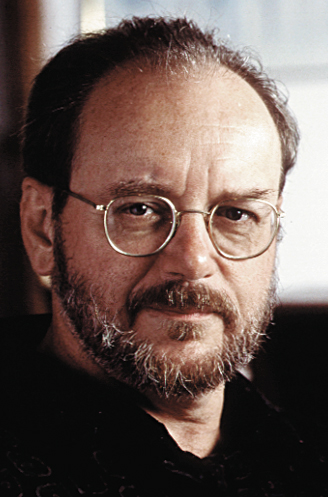Finally! A Loudspeaker That Raises the Bar
Alert readers will recall that I've been hinting about some new loudspeakers that I've been involved with, for quite some time now. Well, they're out and they are definitely worth talking about!
Back in the early 1980's, I began experimenting with high-frequency dispersion in loudspeakers, and actually helped invent some reflecting devices that disperse high frequencies widely when used with conventional drivers. These devices actually got licensed and incorporated in some loudspeakers at the time. However, the technology turned out to have some serious deficiencies that limited the potential for such loudspeakers.
Nevertheless, my research led me to believe that the physical and psychoacoustical principles behind these devices were correct, even though they go against some common wisdom in the audio industry. Those principles (in their current state of evolution) include the ideas that loudspeakers should (a) have flat frequency response on-axis and in a horizontal arc swinging 180 degrees in front of the speakers, while (b) emitting no high frequency information to the ceiling or floor (for example, a 30 degree vertical dispersion), and (c) emitting no high frequencies behind the loudspeaker.
Such performance allows the loudspeaker to interact much more effectively with typical playback rooms to convey useful sonic information to us listeners. It yields constant timbre at all reasonable listening positions and dramatically enhanced stereophonic images, ambiences and reverberation. In short, it effectively solves the "high frequency" part of the loudspeaker/room problem I discussed in my last column.
ENTER BANG & OLUFSEN
Happily for me, a distinguished Danish loudspeaker manufacturer, Bang & Olufsen, did some serious research in the late 1980s (the Archimedes Project) that led to the same principles. We got together and they licensed a device invented by a student of mine, Manny LaCarrubba, that was based on my design criteria-we call the resulting family of devices Acoustic Lens Technology (ALT) . Manny and I formed a company, Sausalito Audio Works that handles our end of the resulting partnership, which includes a long-term consulting contract.
Bang & Olufsen spent about six years in R&D before coming out with a new loudspeaker using our acoustic lens. The wait drove us nuts, accustomed as we are to six-month development cycles typical of the domestic and Asian loudspeaker industries. But B&O was determined to come out with a really good loudspeaker, a "Ferrari among Fords" if you will. The result is a "clean -- sheet -- of-paper" design that I'm immensely proud to have had a part in.
BEOLAB 5 IS BORN
The loudspeaker is called the BeoLab 5 and will probably sell for somewhere around $8,000 per speaker in the U.S. I have ordered a whole batch of them to upgrade my studio and to also have a full set to take out on the road. I believe they may revolutionize how we approach loudspeaker monitoring in the future. Let me tell you why.
(click thumbnail)A "Ferrari among Fords"? Bang & Olafsen's new BeoLab 5 loudspeakers could revolutionize the future of loudspeakers.First, our acoustic lenses are used to handling the mid-range and tweeter, covering from 600 Hz to 20 kHz. I've already described what they do; you've got to hear 'em to really understand. I think the improvement is significant and obvious to both audio professionals and consumers.
Second, B&O came up with a really elegant solution to the low-frequency room problem that I previously discussed. Included in each speaker is a computer with a test microphone that quickly and automatically analyzes the power response of the room and corrects the response of the speaker to complement that response, for its position in the room.
The result is extraordinarily consistent bass performance, from speaker to speaker and from room to room. The system doesn't correct the frequency response of the bass at some arbitrary given listener position, but instead yields a generalized solution that improves response everywhere in the room. I should also mention that low frequency response is prodigious, being down only 3 dB at 20 Hz and only 10 dB at 12 Hz. There are o ports, either, to give lumpy "punchiness" as in so many speakers. The result is, to my ears, extremely musical, stable and satisfying.
As if this wasn't enough, B&O also tackled the power problem. For several years they have been developing (via a subsidiary) small, high performance, high efficiency switching amplifiers under the trade name Ice Power. The BeoLab 5 is a 4-way speaker, with four such amps, yielding 2,500 W in total (1,000 W each for the main and upper woofers, plus 250 W each for the midrange and tweeter!). A stereo pair, therefore, will have 5 kW on tap! Yikes!!
Such power permits B&O to address the issues of thermal power compression (by calculating it and adding back sufficient gain offset) and to run effortlessly at something approaching real concert hall levels (i.e. sustained real-world levels of 108 dB SPL with peaks of 120 dB SPL, should you care to entertain all of the folks on your block). A typical high -- end audiophile speaker system with two gigantic mono -- block amplifiers running at 500 W apiece will run out of steam at probably 10 dB below these levels, all other things being equal. Such power also means that at all sane levels, the BeoLab 5 is simply loafing along, never stressed in the slightest, and if you encounter any signs of distortion, you can know for sure it is occurring elsewhere in your signal path.
Finally, the speaker is fully digital, so you can plug in an S/PDIF feed if you wish. The A/D and D/A converters are of extremely high quality, so no problems will be encountered there either. But the real payoff is that extensive DSP is present, which permits each speaker to be quickly and precisely matched (+/- .25 dB) and documented during manufacture. This, to my mind, is a huge breakthrough. It means that for all intents and purposes, speakers will not be audibly different (a first for mass-produced speakers), and because of the documentation, they can be maintained to hold that tolerance! (Just so you know, there's an RS 232 port included, so the speaker can "talk" to the factory and its DSP is recalibrated to accept a replacement driver.)
Now keep in mind, this is a consumer speaker. It is bullet -- proof and essentially idiot -- proof, à la B&O's design and engineering tradition. Room calibration is completely automated and takes about a minute per speaker-just push a button.
WHY SHOULD YOU CARE?
There are a couple of reasons why this is important to us in the business. First, this is the first time that a reliably and consistently accurate loudspeaker will be in the hands of consumers, and in use as a main pair in a reasonable number of home theatre installations. So, for the first time, some lucky (and well-heeled, maybe influential) consumers will be able to really clearly and accurately hear your work! Uh-oh!
Second, I'm pretty sure that given its virtues, the BeoLab 5 will find its way into numerous mastering suites around the world. I believe that it may very well come to be the reference standard by which all other loudspeakers are judged, simply due to its ability to adapt to different rooms so well.
Finally, we've found, during our press introductions of the BeoLab 5, that listeners, amateur and professional alike, are simply enthralled. We usually have to turn the system off and ask people to leave-they'll stay all night if we let them! Listening to music on loudspeakers is fun again, at a level that is simply startling! Give the BeoLab 5s a listen. You'll hear what I mean.
The professional video industry's #1 source for news, trends and product and tech information. Sign up below.

